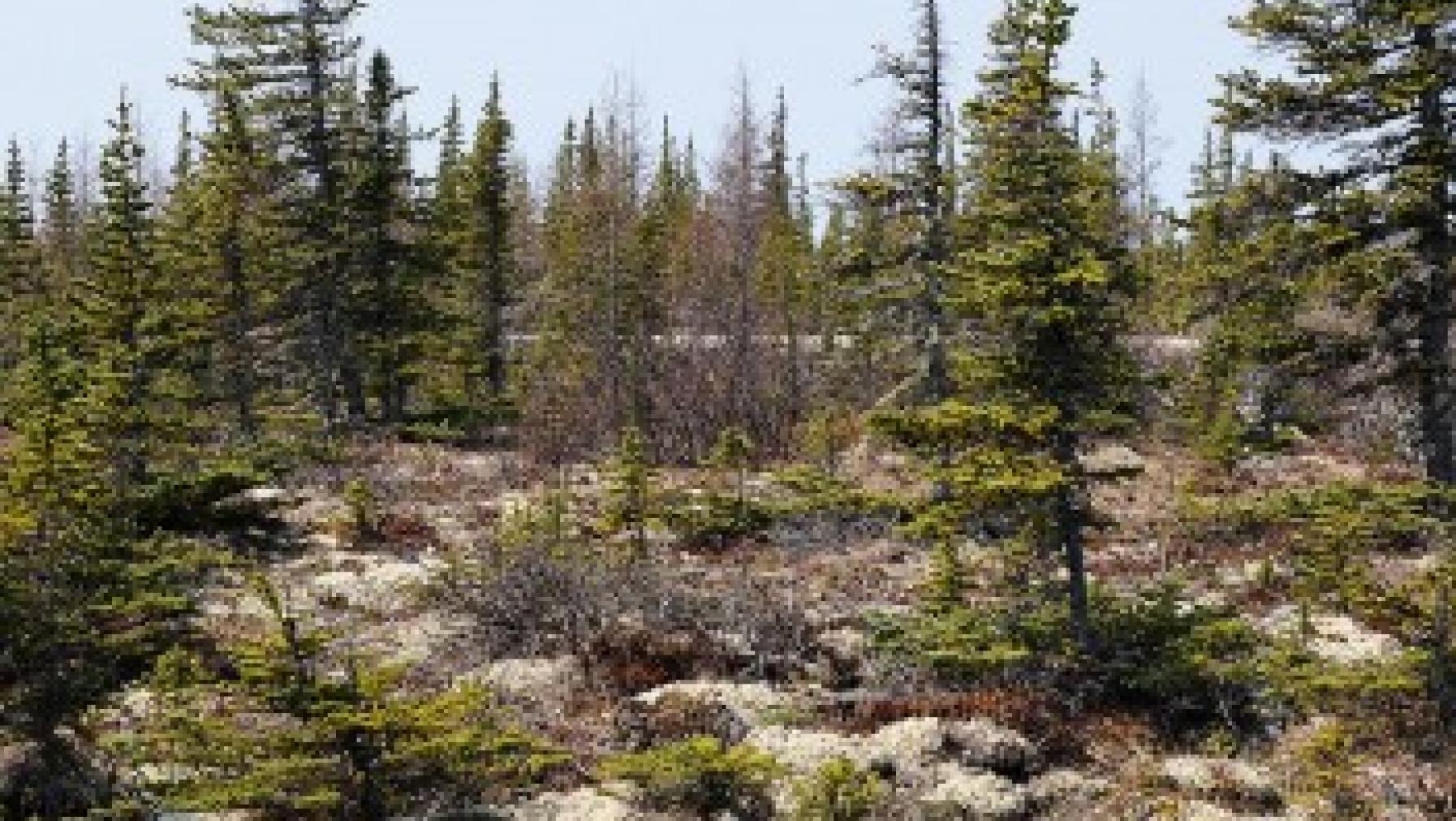Climate
There are cool summers and very cold winters in this high-latitude zone, although these harsh conditions are considerably ameliorated when near warmer oceans, such as in Norway and the Pacific Northwest of North America. Precipitation tends to be spread throughout the year, with heavy snow buildup during winter.
Soils
The low temperatures inhibit bacterial and fungal action, so the decomposition rate is low and the leaf litter relatively deep. Podzols characterize this zone, quite acid soils with a black, organic surface horizon. Organic acids percolating through the soil carry iron compounds out of the near-surface area, leaving a gray, siliceous second horizon. The soil is too acid for earthworms, so the humus is not well mixed with the siliceous horizon. The next horizons down include a second, dark brown, humus layer, and a reddish layer where iron oxides have settled.
Vegetation
Coniferous trees dominate the zone (also called boreal forest) all across the northern hemisphere. These forests are especially well developed along the Pacific Northwest coast of North America, where some of the largest trees in the world occur (the largest species in virtually all of the tree genera that occur there are found in this region). Tree size diminishes with latitude, with forests of smaller and smaller individuals until climatic conditions are too adverse for tree growth. The evergreen trees shade the understory where dense, especially in mid-successional stages. There are virtually no shrub or herb layers under these conditions, but they are well developed where light is available. Mosses and lichens dominate the ground cover. Early succession features broad-leafed deciduous trees and shrubs, which persist along watercourses and under other special edaphic situations, often on richer soils. Oddly, in the temperate zone, angiosperms are fire-climax trees in coniferous (gymnosperm) forests, gymnosperms in deciduous (angiosperm) forests.
Diversity
Species diversity is considerably lower than in temperate deciduous forests; some northern coniferous forests may feature only 1-3 dominant tree species, even where the most highly developed and productive. The diversity of conifers, especially Pinaceae, is substantial over the entire zone and highest in Pacific Northwest, where many genera are present, often with species replacements across life zones. Betulaceae and Salicaceae are also diverse among trees and shrubs, Rosaceae, Ranunculaceae, and Saxifragaceae among herbs. Carnivorous mammals are moderately diverse, probably because rodents are very abundant, if not diverse, in this zone. Some migratory passerine bird groups are very diverse, particularly wood warblers in the New World and thrushes in the Old World.
Plant Adaptations
Conifers go beyond deciduous angiosperms in showing adaptations to cold climates, with spire shapes to shed snow. Because of the slow nutrient release in the soil, it may be too expensive to replace leaves each year, so conifer leaves are evergreen. These evergreen leaves are small, needle-like, and heavily waxed to resist winter desiccation, yet they allow photosynthesis on any day warm enough for it. Evergreen leaves are more susceptible to herbivore damage because they are not replaced regularly, so they incorporate heavy deposits of resins and other anti-herbivore compounds. The lower leaves are dropped as the upper part of the tree shades them out. Most conifers are symbiotic with mycorrhizae to utilize scarce nutrients more effectively. Larches are perhaps deciduous so they can be other than spire-shaped and still shed winter snow. Densely packed monospecific conifer forests could attract high densities of seed predators, but many species produce a superabundance of seeds in one year, thus saturating seed predators, which cannot increase during the alternate years when few seeds are produced.
Animal Adapatations
Adaptations in endothermic vertebrates to conserve heat in low temperatures include large size, low surface-to-volume ratio, and short appendages (ears, snout, legs, tail) relative to similar species of lower latitudes. Birds and mammals have a well-developed insulation of fur or feathers, often thicker in winter than summer. There is a great variety of different strategies to avoid the winter season, including migration (in birds) and hibernation (in some mammals). Some winter-active ground mammals turn white at that season. Food storage is well developed, especially of conifer seeds, which are produced abundantly and accessible to specialists with appropriate bill or tooth adaptations (for example, crossbills among birds, red squirrels among mammals). Populations of some characteristic species are typically cyclical in growth and decline, with predators following prey cycles.
Human Effects
This zone is relatively little affected by humans compared with others, as its climate is more extreme, and its soils are not appropriate for agriculture. Logging is probably the main source of destruction of these forests, which have been cropped extensively in their southern parts but are more or less intact over huge areas farther north in North America and Asia. Replanting after logging leads to single-species conifer monocultures. Fur-bearing mammals are important (luxuriant fur is an adaptation to cold climates), and high-intensity hunting and trapping has reduced numbers of many of them.


